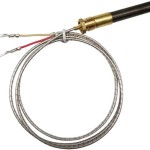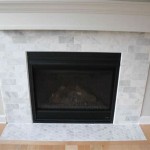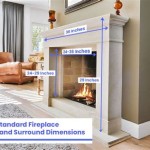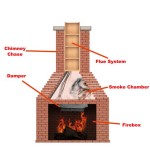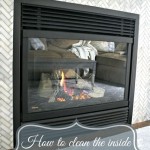Coffee Table Fireplace: Bringing Warmth and Ambiance Indoors
The integration of fireplaces into interior design has evolved significantly over time. Historically, fireplaces served as primary heating sources. Today, they are increasingly valued for their aesthetic appeal and the ambiance they create. Coffee table fireplaces represent a modern interpretation of this classic element, offering a unique blend of functionality and style. These units combine the practicality of a coffee table with the visual warmth of a fire feature, making them a focal point in any living space.
Coffee table fireplaces are particularly appealing to individuals residing in apartments or homes where traditional fireplaces are not feasible. They offer a solution for adding a touch of warmth and elegance without the need for extensive renovations or venting systems. The compact design and versatility of these units allow them to seamlessly integrate into various interior design styles, from minimalist and contemporary to rustic and traditional. The market for these fireplaces has seen increasing growth, driven by a desire for both aesthetic enhancement and supplemental heating options.
The functionality of a coffee table fireplace extends beyond its visual appeal. These units often provide a subtle source of heat, contributing to a cozy and inviting atmosphere. While they are not intended to replace central heating systems, they can effectively warm a localized area, making them ideal for use during cooler evenings or for creating a comforting ambiance during social gatherings. The combined utility of a coffee table and a fireplace makes them a space-saving and practical addition to any home.
Types of Coffee Table Fireplaces
Coffee table fireplaces are available in several different types, each distinguished by its fuel source and construction. The selection of an appropriate type depends on individual preferences, budget, and desired level of maintenance. Understanding the various types is crucial for making an informed purchasing decision.
Ethanol Fireplaces: Ethanol fireplaces are arguably the most popular type of coffee table fireplace. These units utilize bio-ethanol fuel, a renewable and clean-burning alcohol derived from plant-based sources. When burned, ethanol produces minimal soot, smoke, or ash, eliminating the need for a chimney or venting system. Ethanol fireplaces are relatively easy to install and operate. The fuel is poured into a designated burner container and ignited with a long lighter or match. The flame height can typically be adjusted using a damper mechanism, allowing for control over the heat output and visual effect. The primary advantages of ethanol fireplaces are their ease of use, clean-burning properties, and portability. However, ethanol fuel can be relatively expensive, and the heat output is generally lower compared to other types of fireplaces. Safety precautions must be observed when handling and storing ethanol fuel, and the room must be adequately ventilated to prevent the build-up of carbon dioxide. Furthermore, open flames must be supervised at all times.
Electric Fireplaces: Electric coffee table fireplaces operate by simulating the appearance of a real fire using LED lights and reflective surfaces. These units plug into a standard electrical outlet and require no fuel or venting. Electric fireplaces offer several advantages, including ease of installation, safety, and energy efficiency. They produce no emissions and require minimal maintenance. The flame effect can be adjusted for brightness and color, and many models include a built-in heater that can provide supplemental warmth. Some electric fireplaces also incorporate features such as remote control operation, timers, and thermostats. While electric fireplaces do not produce a real flame, advancements in technology have made the simulated flame effects increasingly realistic. The primary disadvantage is that they rely on electricity, which can be a consideration during power outages. Additionally, the visual appeal of an electric fireplace may not be as authentic as a real flame.
Gel Fireplaces: Gel fireplaces utilize gel fuel, a mixture of alcohol and thickening agents that burns with a bright, crackling flame. Gel fuel is typically sold in individual cans that are placed within the fireplace unit. When ignited, the gel produces a realistic-looking flame, but it does not generate significant heat. Gel fireplaces are relatively inexpensive and easy to use, but they produce a strong odor and leave behind a residue that requires periodic cleaning. The heat output is also limited compared to ethanol or electric fireplaces. Gel fuel is not considered as environmentally friendly as ethanol due to the potential for incomplete combustion and the release of volatile organic compounds (VOCs). These type of fireplaces are less common than ethanol or electric options.
Factors to Consider When Choosing a Coffee Table Fireplace
Selecting the right coffee table fireplace involves careful consideration of several factors, including size, design, safety features, and cost. These considerations ensure that the fireplace complements the existing décor, meets the user’s needs, and operates safely and efficiently.
Size and Design: The size and design of the coffee table fireplace should be proportionate to the room and furniture. A fireplace that is too large may overwhelm the space, while one that is too small may appear insignificant. The design should also complement the existing décor style. Coffee table fireplaces are available in a wide range of designs, from sleek and modern to rustic and traditional. The material of the table is another important consideration. Common materials include wood, metal, glass, and stone. The choice of material should depend on personal preferences and the overall aesthetic of the room. Rectangular and square designs are most common, but round and oval options also exist. Consider the height of the table and whether it is comfortable to use as a coffee table while the fireplace is in operation.
Safety Features: Safety is paramount when choosing a coffee table fireplace. It is crucial to select a unit that incorporates appropriate safety features, such as flame guards, tip-over sensors, and automatic shut-off mechanisms. Flame guards prevent accidental contact with the flames, while tip-over sensors automatically extinguish the fire if the unit is knocked over. Automatic shut-off mechanisms turn off the fireplace after a certain period of time, preventing it from being left unattended. It is also important to ensure that the fireplace is made from fire-resistant materials and that it meets relevant safety standards. Regular maintenance and cleaning are essential for ensuring safe operation. Never leave an open flame unattended, and always keep flammable materials away from the fireplace. Smoke and carbon monoxide detectors are highly recommended, even with ventless fireplaces.
Cost and Maintenance: The cost of a coffee table fireplace can vary depending on the type, size, design, and features. Ethanol fireplaces tend to be more expensive than gel fireplaces, while electric fireplaces can range in price depending on the sophistication of the simulated flame effect and the inclusion of a heater. The ongoing cost of fuel should also be considered. Ethanol fuel is generally more expensive than electricity, while gel fuel can be a less expensive option. Maintenance requirements vary depending on the type of fireplace. Ethanol fireplaces require periodic cleaning of the burner and surrounding surfaces, while gel fireplaces require more frequent cleaning to remove residue. Electric fireplaces require minimal maintenance, primarily consisting of dusting and occasional bulb replacements. It's smart to compare the long-term costs (purchase price + operational costs) before making a decision. Consider the initial investment versus the ongoing expenses of both fuel and maintenance.
Installation and Operational Considerations
Proper installation and operation are essential for ensuring the safe and efficient use of a coffee table fireplace. Following the manufacturer's instructions and observing basic safety precautions are crucial for preventing accidents and maximizing the lifespan of the unit.
Placement and Ventilation: The placement of the coffee table fireplace should be carefully considered. The unit should be placed on a stable, level surface, away from flammable materials such as curtains, furniture, and paper. Ensure that there is adequate clearance around the fireplace to prevent overheating or fire hazards. For ethanol fireplaces, proper ventilation is essential to prevent the build-up of carbon dioxide. The room should be well-ventilated, especially during extended use. Avoid placing the fireplace in enclosed spaces with limited airflow. Electric fireplaces do not require ventilation, but they should be placed near an electrical outlet. Consider the proximity to seating areas and the viewing angle of the simulated or real flames for optimal enjoyment and aesthetics.
Fuel Handling and Storage: For ethanol and gel fireplaces, proper fuel handling and storage are critical for safety. Ethanol fuel should be stored in a cool, dry place, away from heat, sparks, and open flames. Never refill the burner while the flame is still burning or the unit is hot. Wipe up any spills immediately with a damp cloth. Gel fuel cans should be stored in a similar manner. Ensure that children and pets cannot access the fuel. Follow the manufacturer's instructions for fuel handling and disposal. Always use the recommended type of fuel for the fireplace, as using other types of fuel can be dangerous. Never attempt to mix different types of fuel. Always use appropriate tools for refilling, igniting, and extinguishing the flames.
Regular Maintenance and Cleaning: Regular maintenance and cleaning are essential for ensuring the safe and efficient operation of the coffee table fireplace. Ethanol fireplaces should be cleaned periodically to remove any residue or spills. Use a soft cloth and mild detergent to clean the burner and surrounding surfaces. Avoid using abrasive cleaners, as they can damage the finish. Gel fireplaces require more frequent cleaning to remove the residue left behind by the gel fuel. Electric fireplaces require minimal maintenance, primarily consisting of dusting and occasional bulb replacements. Inspect the unit regularly for any signs of damage or wear. Replace any damaged parts immediately. Follow the manufacturer's instructions for maintenance and cleaning. Consider using a fireplace screen to protect the glass and prevent soot from adhering to other surfaces.

Coffee Table Fireplace With Remote Ethanol Burner Insert Lou

Kickstarter S Fireplace Coffee Table Is So Hot Right Now Digital Trends Modern Tables

48 Inch Indoor Intelligent Electric Bio Ethanol Burner Coffee Table Fireplace China Made In Com

Level Coffee Table Living Room Fire Pit Furniture

Coffee Table Fireplace With Remote Ethanol Burner Insert Lou

20 Uniquely Beautiful Coffee Tables Creative Table Unique Design

Gin 90 Low Multi Functional Coffee Table Ecosmart Fire

Coffee Table Fireplace With Remote Ethanol Burner Insert Lou

Coffee Tables With Built In Fireplace Digsdigs

Wharf 65 Ecosmart Fire Fireplace Table Alu Floors Scandinavia
Related Posts

